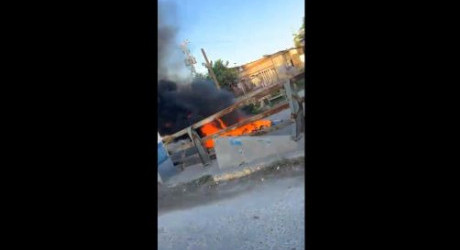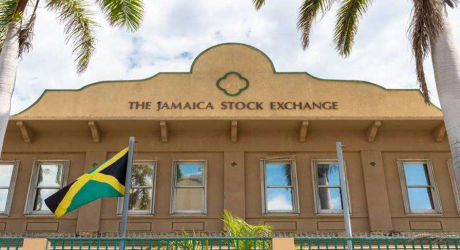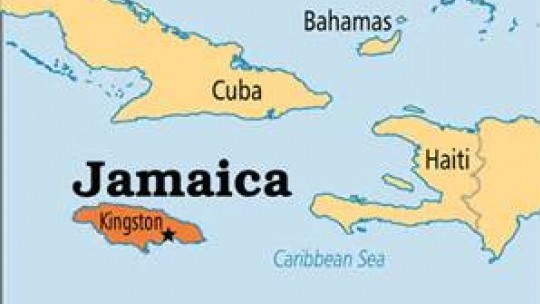Violence in Paradise?
2:01 pm, Wed May 4, 2016
By Earl Moxam
“It’s astounding to think that a lot of people think that Jamaica is a paradise, but it is an extraordinarily violent country with a remarkable murder rate.” – Ashleigh Banfield, CNN
This comment by Ashleigh Banfield, in response to the recent killing of two American missionaries - Randy Hentzel and Harold Nichols - in Jamaica, has evoked outrage, with many of my countrymen blasting the CNN anchor for the less than flattering portrayal of our country.
For objective analysis, let’s break down that sentence and examine the main elements.
“Paradise”
Jamaica has not been anything approaching “paradise” since Europeans landed on its shores, enslaved the native Tainos, raped their women, infected them with their diseases, and ultimately drove them to extinction. Africans were next brought in as slaves to work on the sugar plantations, in the most brutal and dehumanizing conditions, and their descendants constitute the bulk of the population today, in a country that continues to struggle in the face of tremendous odds.
Very often, when foreigners characterize tropical islands as “paradise” they are thinking mainly in respect of the physical attributes of the land – beautiful beaches, lush forests, awe inspiring waterfalls - not necessarily the people. Some do focus on the people, but even among these, there are those who perceive them as unsophisticated, happy-go-lucky, and lacking any concern about the ordinary cares of life. There might be a tendency not to evaluate these “island people” along the same lines as they would their own metropolitan societies, thereby failing to grasp the fact that we are all essentially the same.
But there are the few, like these two good men, who truly come to understand and love the people of Jamaica, and seek to improve the lot of the poorest among them. In my own hometown of Treasure Beach, I have had some of those rewarding encounters with Americans, and remain fast friends with them.
“Extraordinarily violent country”
Jamaica has had a history of violence since the arrival of the Europeans, cited above, and it persisted through hundreds of years of slavery and colonialism. In the second decade of its political independence, in the 1970s, the country became a key regional battleground in the ideological contest of the Cold War era. Local gangs, aligned to the two main political parties, were allegedly armed by their American and Cuban backers, leading to a then unprecedented number of murders in the run-up to the 1980 general election.
Political violence in Jamaica has abated significantly in the years since that watershed election of 1980, but the guns brought in for that contest did not suddenly disappear; they were kept for other purposes. And since the flow of arms and ammunition was turned on, it has never been turned off, particularly in respect of the American source. It is believed that most of the guns brought into Jamaica annually come from the United States, either directly or through third countries.
As a journalist, I have devoted a significant amount of my reporting to the movement of American guns into Jamaica. In my numerous interviews with American security officials about this issue, they have mostly been evasive on the question of American culpability and responsibility to stem the direct flow of guns into Jamaica, preferring instead to focus on the wider issue of drug smuggling and human trafficking. Their argument is that targeting these criminal networks will ultimately lead to the supply of guns being cut off. Well, after four decades of pursuing this strategy, there’s no evidence of it bearing sufficient fruit. The Jamaican police routinely recover more than 600 illegal guns and thousands of rounds of ammunition from individuals and street gangs each year; confirming the fact that the smugglers are largely unhindered in their efforts.
I can only assume that the reason for the evasiveness on the part of these American officials is that they feel hamstrung by the strictures placed on them arising from 21st century interpretations of an 18th century constitutional provision – the Second Amendment - which upholds the right of American citizens to keep and bear arms. Judicial and political interpretations of that right, taken to ridiculous extremes, mean that even straightforward commonsense provisions to safeguard the lives of citizens are routinely defeated, meaning that even the most vulnerable – children in kindergarten – are not safe. Many parents, after they drop their “babies” off at school in the morning, must exist in a state of heightened anxiety for the rest of the day, dreading that phone call which might come from the school about yet another mass shooting.
Modern American history is replete with the gory details of such mass shootings, at schools, in malls, in cinemas, at the workplace, at places of worship, even on military bases. But no matter how shocking and heartbreaking the atrocities, as evidenced by the Sandy Hook Elementary School Massacre in December 2012, the US Federal Government has failed to achieve consensus on even the most basic legislative measures to protect the country’s citizens from those who should not be in possession of a gun.
With guns being so easily available in America, it is no wonder that thousands of these deadly weapons are spirited out of that country into other jurisdictions which lack the capacity to detect many of them at their porous borders. That is the story of Mexico; that is the story of Jamaica. It is a story of criminal destabilization, directly fueled by the inflow of American guns. It is a tragedy for which America is not being held accountable.
“Remarkable murder rate”
That Ashleigh Banfield found it appropriate to make this association with Jamaica is nothing to be happy about; it should be acknowledged and taken seriously. It should also be pointed out, however, that sweeping statements can be misleading, if there is no understanding of the characteristics of the problem , the roots of the problem, and possible solutions to the problem.
I have on numerous occasions sought to reach out to American journalists in some of that country’s biggest newsrooms (including CNN) in an effort to get them interested in examining and reporting on America’s contribution to Jamaica’s gun problem. They have all politely listened and feigned interest, but have never pursued this subject, as far as I know.
In the meantime, they might find it useful to critically examine America’s own murder rate, in comparison, not with impoverished third world countries, but with other so-called developed nations. There they will find that their own society compares very unfavourably with the other advanced countries, in large measure, because of the proliferation of guns in America.
They could also drill down a bit more and examine the situation in some major American cities and there they will discover that, where social conditions mirror the situation in third world countries, the murder rates are approaching what obtains in some of those very under developed countries.
Yes, I do acknowledge that Jamaica has a “remarkable murder rate”, but perhaps because I know the lay of the land and have a better understanding of our culture than Ashleigh Banfield, I remain far more comfortable living in Jamaica than I ever would in the United States. I still do not shiver at the thought of going to a shopping mall or the cinema in Jamaica. In America, I would probably grow dizzy looking around every 30 seconds for the next potential mass killer, exercising his right to bear arms.
Earl Moxam is RJR's Special Assignments Editor

9:32 am, Sat April 20, 2024
.jpg)
5:08 pm, Wed April 17, 2024

7:07 pm, Wed April 17, 2024








 All feeds
All feeds







